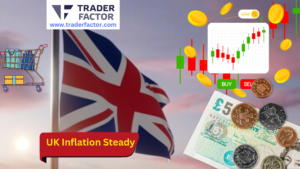The EUR/USD currency pair continues to exhibit a positive trading pattern, maintaining a position slightly above the 1.0900 level as Monday’s second half unfolds. The US Dollar remains somewhat unappealing due to a modestly improved risk sentiment, allowing the currency pair to maintain its footing.
In a narrow range about the 1.0900 figure, the EUR/USD pair has been hovering, with the US dollar showing mixed trade results. This comes as investors grapple with recent central bank announcements. Both the Federal Reserve (Fed) and the European Central Bank (ECB) opted to maintain interest rates during their final 2023 meetings, marking the third consecutive meeting without changes, which hinted at an end to monetary tightening.
Impact of Central Banks’ Announcements and Macroeconomic Data
However, there were noticeable differences in the outlooks and statements from both banks, particularly around inflation and growth risks which appear higher in the Eurozone. Nevertheless, these decisions were met with a heightened risk appetite from market participants, keeping the USD on the defensive despite encouraging macroeconomic data from the United States.
As the week commences, new comments from policymakers have emerged. ECB Governing Council member Peter Kazimir warned that premature easing could be more detrimental than maintaining a tight stance for a prolonged period. Simultaneously, Fed Bank of Cleveland President Loretta Mester noted that discussions are now centered on how long restrictive monetary policy should persist rather than when to implement rate cuts.
In terms of data, Germany released its December IFO survey on Business Climate, which was worse than expected.
GBP/USD Struggles Near 1.2650 Despite Weak USD
On the other hand, the GBP/USD currency pair is struggling to gain momentum, trading just above the 1.2650 mark on Monday. Despite the USD’s struggle for strength, investors are hesitant to gamble on a Pound Sterling recovery ahead of crucial UK inflation data due on Wednesday.
Following a near 100-pip drop on Friday, GBP/USD still managed to record over 1% weekly gains last week. In the absence of significant data releases, Monday’s market remains relatively tranquil. Investors are likely to focus on risk perception and comments from Fed officials later in the day.
Influence of PMI Report and Fed Comments on USD Rebound
After experiencing significant losses against major rivals midweek, the US Dollar made a comeback on Friday, buoyed by the PMI report and hawkish comments from Fed officials.
The US S&P Global Composite PMI rose to 51.0 in December’s preliminary estimate, up from 50.7 in November, indicating a slight increase in the private sector’s growth rate. Furthermore, New York Fed President John Williams countered growing market expectations of a Fed rate cut in March, suggesting that such thoughts were premature and possibly an “overreaction”.
However, despite the generally hawkish tone, Chicago Fed President Austan Goolsbee cautioned that it was too early to claim victory over inflation, though he didn’t rule out a potential rate cut as soon as March.
As Monday dawned, US stock index futures were trading slightly higher. A bearish Wall Street trend, coupled with further hawkish commentary from the Fed, could bolster the USD’s resilience against its rivals, making it challenging for the GBP/USD pair to gain ground.
Anticipated Release of UK’s CPI Data
This Wednesday, the Office for National Statistics of the United Kingdom is set to release the Consumer Price Index (CPI) data for November. This significant economic indicator will provide insights into the monthly changes in the price of goods and services, thereby reflecting the inflation rate within the UK economy.
Gold’s Market Performance
Gold, or XAU/USD, has been fluctuating within a narrow band, hovering around the $2,020 mark. Despite closing the previous week with a slight uptick, gold’s bullish momentum struggles against the rising benchmark 10-year US Treasury bond yield, which has edged closer to 4% at the start of the week.
Factors Influencing Gold Prices
The gold price (XAU/USD) made a positive start to the week, clinging onto its modest intraday gains throughout the European session. However, it lacks substantial buying support. The Federal Reserve’s recent signal of an end to its monetary tightening cycle and its projection of a cumulative 75 basis points (bps) rate cuts in 2024 have curbed the strong bounce of the US Dollar (USD) from over a four-month low reached on Friday. This development acts as a supportive factor for the commodity.
Nonetheless, market bets for early interest rate cuts were countered by two Federal Reserve (Fed) officials on Friday. Furthermore, the global equity markets are experiencing a strong risk-on rally, fueled by the Fed’s dovish pivot and expectations of additional stimulus from China. These factors limit any significant appreciation of gold prices.
Market participants are now looking forward to this week’s release of the US Core PCE Price Index – the Fed’s preferred inflation gauge, due on Friday. This crucial inflation reading will shape market expectations about when the Fed will start easing its policy and will play a crucial role in determining the next directional move for non-yielding gold price.
USD/JPY Performance Ahead of BoJ Decision
The USD/JPY pair is gaining momentum in Monday’s session, trading around the 143.00 level. The pair’s upward trajectory is largely driven by a surge in US yields and a risk-on environment, which diverts demand away from the safe-haven Japanese Yen (JPY).
Factors Influencing USD/JPY
The Japanese Yen (JPY) continues to weaken against the US Dollar (USD) for the second consecutive day on Monday, pulling back further from its highest level since late July reached last week. The global risk sentiment remains upbeat, bolstered by prospects for interest-rate cuts in 2024 and a positive outlook from China’s Central Finance Office. This development undermines the JPY’s relative safe-haven status, assisting the USD/JPY pair to maintain its modest intraday gains, just below the mid-142.00s as the European session gets underway.
However, the markets seem convinced that the US central bank will commence easing its policy by the first half of 2024 despite top Fed officials trying to temper speculation about early interest rate cuts. This factor limits the USD’s recovery from over a four-month low reached on Friday.
Traders, in the meantime, are taking a cautious stance ahead of the highly anticipated Bank of Japan (BoJ) monetary policy decision, scheduled for announcement during the Asian session on Tuesday. This caution is warranted before confirming that the USD/JPY pair has established a near-term bottom around the 141.00 mark. In the run-up to this key central bank event, traders will be guided by the broader risk sentiment and the USD price dynamics, given the absence of any significant macroeconomic releases from Japan or the US.
Disclaimer:
All information has been prepared by TraderFactor or partners. The information does not contain a record of TraderFactor or partner’s prices or an offer of or solicitation for a transaction in any financial instrument. No representation or warranty is given as to the accuracy or completeness of this information. Any material provided does not have regard to the specific investment objective and financial situation of any person who may read it. Past performance is not a reliable indicator of future performance.
Author
-

Phyllis Wangui is a Financial Analyst and News Editor with qualifications in accounting and economics. She has over 20 years of banking and accounting experience, during which she has gained extensive knowledge of the forex, stock news, stock market, forex analysis, cryptos and foreign exchange industries. Phyllis is an avid commentator on these topics and loves to share her insights with others through financial publications and social media platforms.
View all posts



















